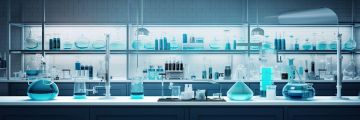Digital instructional media for use in undergraduate chemistry teaching
This project was developed internally at South East Technological University (SETU) to support students and staff in the Laboratory Sciences area, with funding from the National Forum for the Enhancement of Teaching and Learning in Higher Education through the SATLE project. A series of short laboratory technique videos was created to enhance connection and promote deep learning among students across all years of our Pharmaceutical and Biopharmaceutical Science programs at SETU. These videos were collaboratively prepared by both staff and students and have been integrated into existing courses and modules. Additionally, a Chemistry Laboratory Techniques manual was developed to complement the video content. The project places a strong emphasis on raising awareness of green chemistry principles and improving sustainability in undergraduate laboratories.
Video resources
This video provides an overview on how to incorporate sustainability practices in chemistry and biology laboratories. It looks at best practices around energy and water consumption including waste management and recycling.
In this video we learn how to use a typical top loading balance and an analytical balance – including the steps involved in setting up, taking measurements and cleaning the balance.
This video demonstrates how to perform a gravity filtration and the best practices associated with this technique. This separation technique is used to separate liquid from solids.
This video demonstrates how to perform a Vacuum or Buchner filtration and the best practices associated with this technique. This separation technique is used to separate liquid from solids.
This video looks at different pieces of volumetric glassware, the accuracy associated with each piece of glassware, how to prepare a solution of accurately know concentration and to prepare a dilute solution from a more concentrated solution. The best practices associated with solution preparation are explored.
This video demonstrates the set-up of a simple reflux apparatus used in organic synthesis. Organic reactions tend to be slow. To increase the rate of reactivity of these reactions, they are often carried out at higher temperatures. Refluxing enables us to heat a solution to boiling and condense the resulting vapour by continuous cooling. The method of reflux in tandem is also demonstrated. The best practices associated with reflux and reflux in tandem are explored.
This video demonstrates the set-up of a simple distillation apparatus used in the separation of liquids based on their differing boiling points. The liquid with the lower boing point will boil first producing a vapour. This vapour moves through a condenser where it condenses, and the distillate is collected in a receiving flask. The best practices associated with distillation are explored.
This video demonstrates the set-up of a Soxhlet Extraction, which is a separation technique that involves repeatedly circulating the same solvent through an extraction chamber in order to extract a substance from a solid compound. This method uses the principle of solvent reflux and siphon principle to continuously extract solid by a pure solvent. Useful when the desired compound has a limited solubility in a solvent. The best practices associated with Soxhlet Extraction are explored.
Liquid-liquid extraction, also known as solvent extraction or partitioning, is a separation technique used to separate compounds based on their relative solubilities in two different immiscible liquids. These two liquids are typically water and an organic solvent. These liquids must be insoluble. In organic chemistry, liquid-liquid extraction plays a critical role in the purification and isolation of specific substances from complex mixtures. The processes associated with Liquid-liquid extraction are explored.
Video coming soon
Rotary Evaporation is a separation technique where distillation of volatile substances is carried out under reduced pressure. It works by rotating a sample in a heated water bath under vacuum, which causes the solvent to evaporate and be condensed by a cold finger or a condenser. This technique results in higher purity and concentration of the desired compound. Rotary evaporators play a crucial role in various scientific, industrial and cookery contexts.
This video demonstrates how to perform Thin-layer chromatography (TLC), which is a chromatographic technique used to separate components in non-volatile mixtures. Different compounds in the mixture have varying affinities for the stationary and mobile phases, leading to separation. TLC is a quick, cost-effective and widely used technique used in both analytical and synthetic chemistry, where it can be used as a quick tool to monitor reactions.
This video demonstrates the purification of a compound that is solid at room temperature, using the technique of recrystallization. The basic principle of recrystallisation is that the material to be purified is dissolved in a minimal amount of a hot (usually boiling) solvent and then recrystallises out once the solution is cooled, leaving impurities dissolved in the solvent. The best practices associated with recrystallization are explored.
This video demonstrates the set-up of a basic colorimeter. A colorimeter is a visible or optical spectrometer, which is an analytical instrument that measures the absorption of light in the visible region (400-700nm), by coloured solutions, and relates this absorption to the concentration of the solution using the Beer-Lambert Law. The best practices associated with colorimetry are explored.
This video demonstrates the set-up and use of an UV-VIS spectrophotometer. This technique is based on the absorption of electromagnetic radiation in the UV-VIS region (200-800nm) by matter. It’s widely used to identify and quantify compounds in various samples. The best practices associated with UV-VIS Spectroscopy are explored
This video demonstrates the set-up and use of an IR Spectrometer. IR Spectroscopy is a technique that measures the amount of infrared light transmitted by a sample. The IR spectrum can be used to identify the functional groups present in a molecule and thus support structure determination. IR spectra can also be used for compound identification and detection of impurities among other applications. The best practices associated with Infra-Red Spectroscopy are explored.


